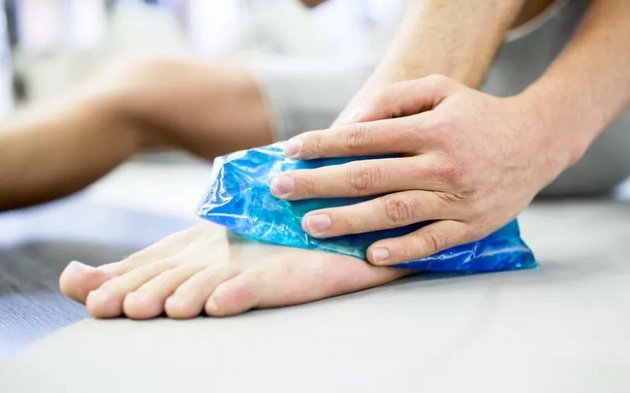Statistics show that 20 to 80% of runners are injured every year. Although this figure is lower for sports walking enthusiasts, since the joints and ligaments are not under such stress, all walking mileage enthusiasts are faced with all kinds of chronic pain – from knee pain to plantar fasciitis.
Running injuries are often associated with training errors, abnormalities in biomechanics or gait, power imbalances, lack of flexibility, improper or worn footwear. The good news is that all of these problems have solutions. What’s more, by taking the necessary steps in time, many common injuries can be avoided.
Running Injuries: Risk Factors
Numerous studies are trying to identify specific risk factors in the hope of helping runners and walkers avoid common injuries. One such study involved 930 novice runners. According to the findings, participants in the older age group (45 to 65 years old) are most at risk. At high risk, people with a BMI over 30, as well as runners who have previously had a non-running injury. Interestingly, even personality traits can affect the frequency of injury. Runners who prefer “calm and leisurely” runs are more likely to suffer from running injuries.
If you find yourself in one of the risk groups, you should be on the alert and take measures to prevent running injuries in advance. Knowing the first signs and symptoms of common running injuries, as well as understanding the principles of their treatment and prevention, will help you avoid the main threats that can send you to the hospital for a long time. In the vast majority of cases, armed with basic information and listening to your body, you will be able to stay healthy and run or walk all year round.
Causes and Symptoms of Common Running Injuries
It is important to be able to differentiate between common soreness and pain associated with trauma. If you are embarking on a new training program after a long break, chances are you will experience moderate soreness as your body adjusts to the stress. But if you are experiencing acute or severe pain in any location, you should take immediate action.
If it’s simple soreness from starting or returning to running workouts, keep going as planned. Delayed muscle aches may occur a couple of days after a run, so it will take about a week to fully recover. Fortunately, this pain is not a symptom of dangerous injuries, and it goes away on its own.
If you suspect a serious injury, the first step is to pause your workouts or switch to other aerobic activities to assess the situation. By diagnosing trauma early and responding in a timely manner, you can skip just a couple of days instead of a couple of months.

Running Injury Prevention and Treatment
If you are experiencing symptoms that may indicate the development of an injury, you can try the following options:
1. Reduce mileage
Since overuse is one of the main causes of injuries when running and walking, the first step is to adjust your training program. Depending on the type of injury, this can be either a decrease in the time and weekly mileage of running, or a complete cessation of training. If the pain goes away on its own after a couple of days, start slowly increasing the distance you run.
2. Replace running with another activity
For example, if your knee hurts, replace running with cycling or swimming. By choosing an alternative low-intensity cardio activity, you can continue to work on developing aerobic endurance without axial shock loads on bones, joints and muscles.
3. Apply ice or heat
Depending on the type of pain, you can apply heat or ice to the painful area. Cold compresses help reduce inflammation, and heat is better for chronic pain. Take an ice bath, take a bag of frozen peas, or freeze water in a paper cup and apply them to the painful area for 10 minutes 2-3 times a day.
4. Self-massage
The massage roller (fom-roller) and other massagers for home use are a great way to prevent many soft tissue problems before they become serious injuries. If detected early, injuries such as iliotibial tract syndrome can be easily prevented by taking a few minutes a day to self-massage the thigh muscles.

Looking for professional help
If prevention and primary care do not help, or if you are experiencing severe or persistent pain, you should make an appointment with a specialist. Who should I contact in such a situation?
Here is a list of top runner injury specialists and walkers.
Sports medicine doctor
If you don’t know who to contact in case of injury, you can start with sports doctors. They not only correctly diagnose numerous running injuries, but also work closely with physiotherapists and therapists to help develop a rehabilitation plan and accelerate your recovery.
Physiotherapist
Physiotherapists make a plan for rehabilitation after injuries, and at the same time help to find the root of your problem. Through a series of diagnostic tests that include running or walking on a treadmill, strength and muscle development, physical therapists often identify the root cause of a running injury. In addition to the rehabilitation program, they provide a set of exercises that will help you avoid similar injuries in the future.
Podiatr
In the case of an injury that is localized in the area from the knee joint to the foot, it is best to see a podiatrist. Foot specialists treat everything from plantar fasciitis to Achilles tendon inflammation. They will also assist in the manufacture of individual orthopedic insoles that help runners and walkers avoid injuries to the entire kinematic chain.
Chiropractor
Many active lifestyles swear by chiropractors to keep their bodies in optimal shape. Chiropractors treat any injuries to bones and soft tissues, as well as regularly prevent injuries and diseases of ODA. In addition to correcting abnormalities, they may use gentle manual therapy techniques such as active release techniques or instrumental soft tissue mobilization.
Sports masseur
These soft tissue specialists are adept at relieving muscle spasms and tension that lead to pain and restrict movement. Many sports massage therapists are certified active release techniques and instrumental soft tissue mobilization for more serious injuries.
